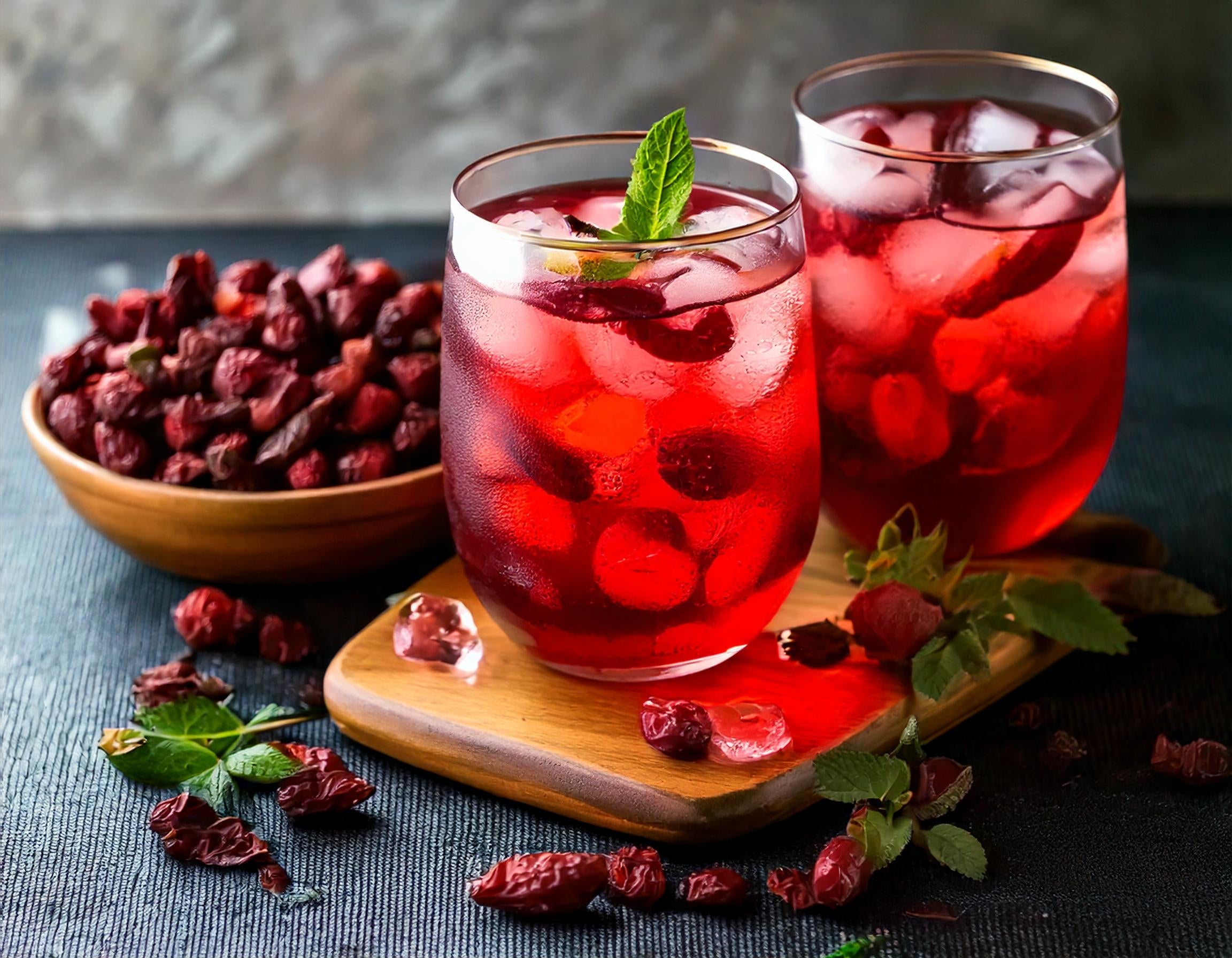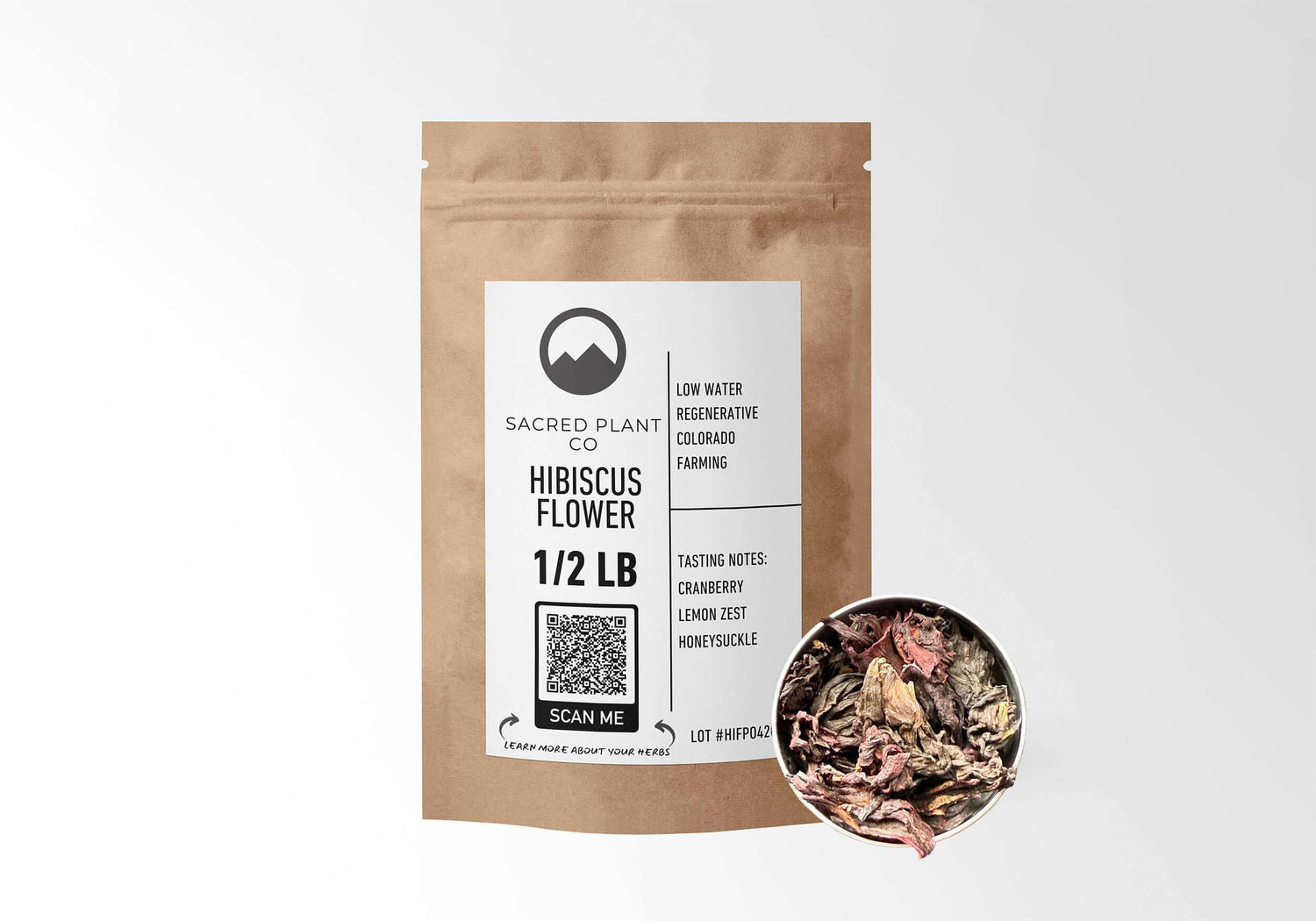Hibiscus Flowers (Hibiscus sabdariffa): Flavor, Uses, & Creative Recipes
Hibiscus sabdariffa is a vivid, tart-bright blossom beloved in teas, syrups, and kitchen craft across the world. Below you’ll find a respectful, practical guide to flavor notes, simple preparations, sourcing tips, FAQs, and links to go deeper.
Quick Flavor & Aroma Notes
- Cranberry-tart brightness with ruby color.
- Lemon-zest sparkle that lifts blends.
- Soft floral thread (honeysuckle/rosehip tone).
Tip: Balance hibiscus with a touch of sweet (honey, date syrup) or round it with spices (ginger, cinnamon) to keep the tartness lively but friendly.
Traditions & Cultural Context (Informational)
Hibiscus sabdariffa (often called roselle) likely has West African origins, and its story travels with people, trade, and celebration. By the 18th–19th centuries, colonial trade and diasporic movement had carried roselle across the Atlantic and into the Caribbean, where it became “sorrel,” a red, spiced holiday drink made with cinnamon, clove, ginger, and citrus—still central to Christmas festivities and end-of-year gatherings. In Senegal and neighboring countries, the same crimson calyces are brewed as bissap, poured at markets and ceremonies; you’ll often find versions sharpened with ginger or fragranced with mint and orange blossom, a shared taste of hospitality. Farther east along the Nile, karkadé (Egypt/Sudan) appears in both everyday refreshment and special occasions—offered hot in winter, iced in summer, and common at social visits or wedding toasts.
Roselle also moved along Indian Ocean routes into South and Southeast Asia. In India’s Deccan and Andhra regions, the tangy green leaves (gongura) are cooked into dals, pickles, and chutneys—proof that hibiscus isn’t only a flower for drinking but a leaf for the table. In Myanmar, the leaves (chin baung ywet) add bright sourness to curries and salads; in Thailand, nam krajeab is a beloved ruby cooler sold by street vendors; and in Indonesia and Malaysia, roselle jams, cordials, and syrups show up in home kitchens and cafés alike. In Mexico and Central America, flor de Jamaica likely arrived via Caribbean and trans-Pacific exchanges; over time it settled into daily life as Agua de Jamaica—steeped, sweetened, and served over ice—now a staple of aguas frescas stands and home pitchers.
Historically, hibiscus was valued not only as a beverage plant but also as a source of color and fiber. The calyces provided a natural dye for foods and textiles, and the plant’s bast fibers (related species and some roselle varieties) were worked into cordage and twine. Across regions, the deep red color signals festivity, warmth, and welcome; the brew itself—poured from shared pitchers at street stalls, family tables, and community feasts—functions as an everyday ritual of care and conviviality.
These snapshots are historical and cultural waypoints: they explain how hibiscus became woven into markets, holidays, and home kitchens around the world. They’re not medical instructions, but a record of taste, place, and practice—useful context for anyone exploring hibiscus for its flavor, color, and role in community life.
Use responsibly: If you’re pregnant, managing blood pressure, taking diuretics, or on medications, talk with a healthcare professional before adding concentrated herbal preparations.
How to Use Hibiscus
Everyday Tea (Hot or Iced)
Ratio: Use 1–2 teaspoons dried hibiscus per 8 oz (240 ml) water. For a teapot, ¼ cup (about 10 g) per quart/liter works well.
Hot brew: Heat water to ~200°F / 93°C. Steep 5–7 minutes for a bright, cranberry-tart cup; 8–10 minutes for deeper color and tang. Strain through a fine mesh or paper filter to catch tiny calyx specks.
Cold brew (smoother, less tart): 1 tablespoon per 8 oz cold water. Refrigerate 6–12 hours, then strain. Keeps 2–3 days in the fridge.
Iced concentrate: Brew double strength (2 tsp per 8 oz), sweeten if you like, then pour over a full glass of ice and top with sparkling water.
Flavor pairings: Mint, ginger, cinnamon, cardamom, clove, vanilla, rosehips, orange or lemon peel.
Sweeteners: Honey, simple syrup, agave, or date syrup. A squeeze of citrus rounds the tartness.
Serving ideas: Garnish with an orange wheel, muddled berries, or fresh mint. For a café-style “tea latte,” mix strong hibiscus with warm frothed milk (or coconut milk) and a touch of vanilla.
Hibiscus Kitchen Syrup
Base method: Simmer 1 cup (240 ml) water with ½ cup sugar (or use honey on the lowest heat—don’t boil honey).
Infuse: Stir in ½ cup dried hibiscus. Cover, remove from heat, and steep 10–15 minutes.
Strain & store: Strain through a fine mesh or coffee filter; you’ll yield ~1 cup syrup. Refrigerate up to 2 weeks or freeze in ice-cube trays for longer storage.
Flavor options: Add ½ tsp grated ginger, a 2–3” strip of orange zest, a cinnamon stick, or a splash of vanilla while steeping; strain out with the flowers.
• How to use:
Seltzers & sodas: 1–2 tablespoons per 8–12 oz sparkling water.
Mocktails: Shake 1 oz hibiscus syrup + ½ oz lime juice + ice; top with soda, garnish with mint.
Vinaigrettes: Whisk 1 tbsp syrup + 1 tbsp vinegar + 2–3 tbsp olive oil + pinch of salt.
Desserts: Drizzle over yogurt, ice cream, pavlova, or fresh fruit. Great in sorbet bases.
Craft & Culinary Ideas
Jam/Jelly boost: For every 4 cups fruit, add 2–3 tablespoons dried hibiscus (or ¼ cup strong hibiscus tea) while cooking to deepen color and add a cranberry-like tang. Strain before jarring if you prefer a smooth texture.
Rimming sugar: Pulse 2 tablespoons dried hibiscus with 4 tablespoons sugar and the zest of 1 lemon until fine. Store airtight; use on mocktail glasses or sprinkle on cookies.
Pickled pink: Add 1 teaspoon dried hibiscus per cup of warm pickle brine for a rosy hue and gentle tartness; strain before pouring over vegetables.
Baking tint: Swap part of a recipe’s liquid for strong hibiscus tea to tint glazes and cake syrups naturally.
Décor & sachets: Blend dried hibiscus with orange peel, cinnamon sticks, and cloves for potpourri; for drawer sachets, portion into breathable cotton bags. Refresh with a drop of vanilla or citrus essence as needed.
Practical Tips
• Hibiscus can stain porous surfaces and wooden spoons—use stainless steel or silicone tools and rinse equipment promptly.
• For a clearer cup or syrup, line your strainer with cheesecloth or a paper filter.
• Label jars with date and ratio so you can repeat your favorite strength.
Quality, Storage & Sourcing
What Good Hibiscus Looks Like
- Deep ruby to wine-red calyces; low dust; clean aroma.
- Cut-and-sifted pieces that brew evenly.
- Fresh, lively color (dull brown often signals age or poor drying).
Storage
- Keep sealed, cool, and dark; avoid steam and sunlight.
- Best within 12–18 months; label with open date.
- Refrigerate syrups; finish within 10–14 days.
See our lab documentation (COA): Hibiscus COA.
Frequently Asked Questions
What makes hibiscus tea so red and tart?
Anthocyanins and organic acids in the calyces create the vivid color and tang. A shorter steep yields bright, cranberry-like flavor; longer steeps intensify tartness and color.
How do I keep hibiscus from tasting too sour?
Use a lighter ratio (1 tsp per 8 oz), steep 4–5 minutes, and balance with a touch of honey or a slice of orange. Pairing with mint, cinnamon, or ginger softens the acidity.
Is hibiscus caffeine-free?
Yes—pure hibiscus is naturally caffeine-free. If you blend it with black or green tea, the final cup will contain caffeine from the tea leaves.
Any cautions I should know?
Concentrated hibiscus may not be appropriate for everyone. If pregnant, nursing, managing blood pressure, on diuretics, or taking prescription medications, consult your healthcare professional before use.
Can I cook with hibiscus beyond tea?
Absolutely. Infuse simple syrups for beverages, steep in cream for desserts, fold ground hibiscus into spice rubs, or add to jams and chutneys for a ruby hue and tang.






